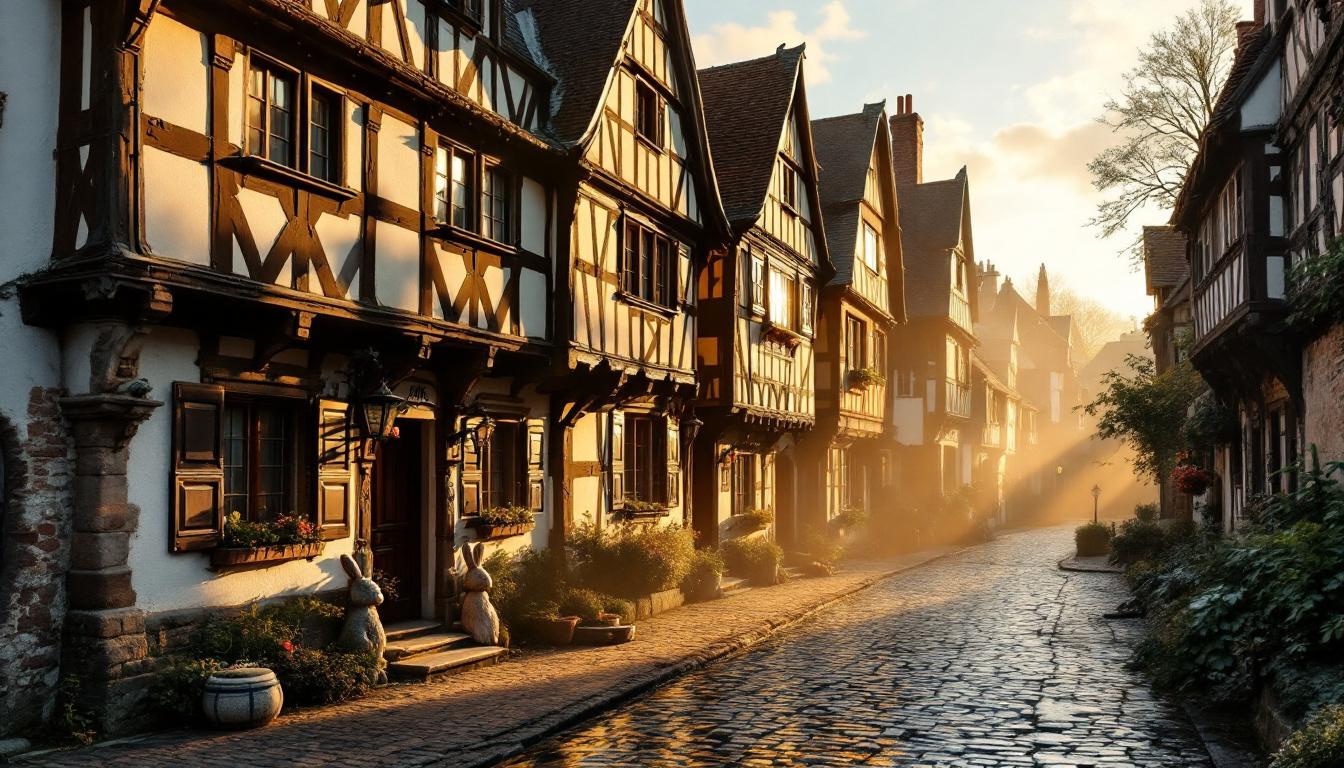Carved into the idyllic Brittany countryside, Malestroit’s thousand-year-old streets tell stories that most travelers to France never hear. This medieval gem along the Nantes-Brest Canal harbors more architectural treasures per cobblestone than cities triple its size. While Paris captures headlines and Nice draws sun-seekers, this “Pearl of the Oust” offers a glimpse into authentic Breton life that hasn’t been polished for tourist consumption.
Where time freezes along half-timbered facades
Malestroit’s medieval center unfolds like an illustrated manuscript of architectural history. Fifteenth and sixteenth-century half-timbered houses lean familiarly toward one another across narrow lanes, their wooden frames creating geometric patterns against whitewashed walls. The preservation here isn’t manufactured—it’s simply the result of a town that never needed to reinvent itself.
“Our buildings don’t just represent our past; they’re how we still live today,” explains Marie Rouault, whose family bakery operates from a 16th-century structure. “The timber frames you see aren’t museum pieces—they hold up my ceiling while I bake bread each morning.”
The whispering waters that powered a medieval economy
The Nantes-Brest Canal embraces Malestroit like a liquid boulevard, its placid surface belying centuries of commercial importance. Along Île Notre-Dame, ancient water mills testify to the town’s industrial heritage, when tanneries and flour production drove the local economy. Today, these waterways serve pleasure rather than commerce, offering sublime cycling paths and boating opportunities similar to those found in Scandinavian waterfront cities, though with distinctly French character.
The church where sunlight creates impossible shadows
Saint-Gilles Church doesn’t just dominate Malestroit’s skyline—it harbors what might be France’s most peculiar solar phenomenon. At precisely 3 PM solar time, sunlight strikes an ox sculpture in such a way that its shadow projects Voltaire’s perfect profile onto a nearby wall. This astronomical precision recalls the sacred mountains of Japan where natural and spiritual elements align, though here with a distinctly Enlightenment twist.
Every afternoon the church performs its little miracle. In an age of digital effects, there’s something profoundly moving about this ancient optical illusion that has amazed visitors for centuries.
A market square where medieval commerce lives on
Wednesday and Saturday mornings transform Place du Bouffay into a sensory feast that has changed little since medieval times. Farmers arrange produce in cascading displays while artisanal cheese makers offer samples of pungent local varieties. The market connects modern visitors to traditions as old as the town itself, each transaction a small celebration of Breton culture.
The rabbit carvings that tell forgotten tales
Sharp-eyed visitors might spot whimsical carved rabbits adorning a corner building near the square. These “fairytale seated rabbits” represent one of many stone curiosities throughout town. Like the blue-painted walls of Morocco’s famous mountain villages, these carvings each tell a story—though the tales behind Malestroit’s rabbits have been lost to time.
Beyond the town walls: daytrips into Breton countryside
Malestroit serves as the perfect base for exploring Brittany’s interior. Just 13 kilometers away, Rochefort-en-Terre ranks among France’s most beautiful villages, while the magnificent Château de Josselin stands sentinel 20 kilometers distant. The mysterious Brocéliande Forest (Paimpont) beckons with Arthurian legends, offering an enchanted counterpoint to medieval villages along southern France’s rivers.
When to visit this undiscovered pearl
Late spring (May-June) delivers Malestroit at its finest—before summer crowds arrive but when cafés have set out their canal-side tables. Alternatively, September offers golden light that photographers treasure, illuminating ancient stonework while temperatures remain pleasant. Winter visitors enjoy having the medieval streets nearly to themselves, much like those who visit Catalonia’s mountain villages during off-season.
Malestroit doesn’t announce itself with grand monuments or aggressive marketing. Instead, it whispers its stories to those patient enough to listen—through carved stone rabbits, the rhythm of canal locks, and the perfect Voltaire shadow that appears each afternoon. In a country renowned for its treasures, this Breton jewel offers something increasingly rare: an authentic glimpse into France’s medieval soul that hasn’t been choreographed for visitors.
